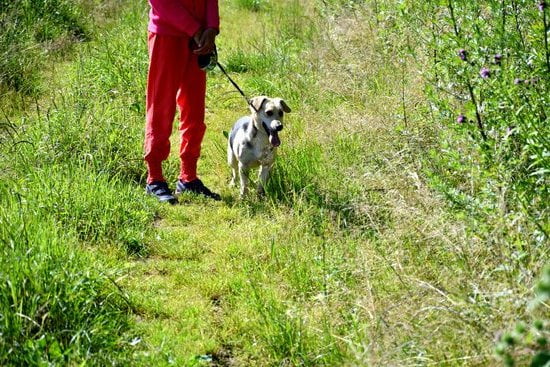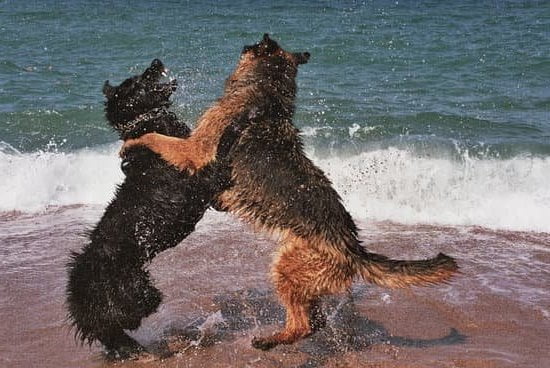When it comes to having a well-behaved and obedient pet, training dog is crucial. Whether you have a new puppy or an older dog, proper training can make a significant difference in their behavior and overall happiness. In this article, we will explore the importance of dog training and provide valuable tips for both basic and advanced training techniques.
Firstly, understanding the significance of dog training is essential for all pet owners. Training not only helps improve your dog’s behavior, but it also strengthens the bond between you and your furry friend. Additionally, a well-trained dog is safer to be around, both at home and in public settings. With the right approach and consistency, you can effectively teach your dog important commands and address any behavior issues they may have.
In the upcoming sections, we will cover various aspects of dog training – from basic techniques for puppies to addressing specific behaviors such as sitting, staying, coming, and heeling. We will also delve into the debate between positive reinforcement and punishment as training methods, as well as how to find the right training program or professional for your dog. With patience and dedication, you can transform your pet into a well-mannered companion through effective training methods.
Basic Training Techniques for Puppies
When it comes to training a new puppy, the key is to start early and be consistent. The first few months of a puppy’s life are crucial for shaping their behavior and instilling good habits that will last a lifetime. Here are some basic training techniques to get you started on the right foot:
1. Socialization: Exposing your puppy to different people, animals, and environments from an early age is important for preventing fear and aggression in the future. Enroll your puppy in socialization classes or invite friends and family over to meet your new furry friend.
2. Crate training: Crate training can help with housebreaking and provides your puppy with a safe and comfortable space of their own. Introduce the crate gradually, using treats and toys to create positive associations.
3. Basic commands: Start teaching your puppy basic commands like “sit,” “stay,” and “come” as soon as they’re old enough to understand. Use positive reinforcement techniques such as treats and praise to encourage good behavior.
Remember that consistency and patience are key when training a puppy. It’s also important to make training sessions fun and rewarding for your furry companion so that they look forward to learning new behaviors. By starting early with these basic training techniques, you can set the foundation for a well-behaved adult dog in the future.
Advanced Training Tips for Adult Dogs
Continued Consistency
After mastering the basic training techniques as a puppy, it’s crucial to continue training your dog throughout its life. Adult dogs can still learn new tricks and behaviors, but it will require patience, consistency, and dedication. Consistency is key when it comes to advanced training for adult dogs. It’s important to maintain a regular training schedule and stick to the same commands and cues that were established during their puppyhood.
Introducing Distractions
As adult dogs progress in their training, it’s essential to gradually introduce distractions into their training sessions. This could include practicing commands in different environments such as parks or busy streets, with other people around, or even with other animals nearby. By slowly introducing distractions, you can reinforce your dog’s ability to focus and follow commands in varying situations.
Advanced Obedience Training
For adult dogs, advanced obedience training can include more complex commands such as “leave it,” “drop it,” or “go to your place.” These commands are not only helpful for managing behavior but also for ensuring the safety of your dog in various situations. With consistent practice and positive reinforcement, adult dogs can learn these advanced commands effectively.
As you continue to train your dog into adulthood, remember that each dog learns at its own pace. Be patient and understanding of your pet’s needs and capabilities while maintaining a positive and encouraging environment during training sessions. With the right approach and techniques tailored to adult dogs, you can continue to see progress in their behavior and obedience.
Positive Reinforcement vs Punishment
When it comes to training your dog, it’s essential to understand the difference between positive reinforcement and punishment. Positive reinforcement involves rewarding your dog for good behavior, while punishment focuses on correcting bad behavior.
Studies have shown that positive reinforcement is the most effective method for training dogs. It creates a strong bond between you and your pet and encourages them to repeat the desired behavior. This can include giving treats, praise, or toys as a reward for following commands or exhibiting good behavior. On the other hand, punishment-based training methods can lead to fear, anxiety, and aggression in dogs.
One of the key benefits of using positive reinforcement is that it helps build trust and confidence in your dog. This method encourages them to think and problem solve, leading to better overall behavior. When choosing a training method for your dog, consider the long-term effects on their well-being and the quality of your relationship with them.
| Training Method | Effectiveness |
|---|---|
| Positive Reinforcement | Creates strong bond, encourages good behavior |
| Punishment-based | Can lead to fear, anxiety, and aggression |
Training for Specific Behaviors
Teaching Your Dog to Sit
One of the most basic commands to teach your dog is the “sit” command. This command is essential for controlling your dog and keeping them safe in various situations. To train your dog to sit, start by holding a treat close to their nose and then slowly move your hand up.
As their head follows the treat, their bottom will naturally lower into a sitting position. Once they are in the sitting position, praise them and give them the treat. Repeat this process several times until your dog can sit on command without needing a treat as a lure.
Training Your Dog to Stay
The “stay” command is crucial for keeping your dog safe in potentially dangerous situations. To begin training your dog to stay, have them sit or lie down. Then, with an open palm facing them, say “stay” and take a small step back. If they stay in place, reward them with a treat and praise. Gradually increase the distance as they become more comfortable with staying in place.
Teaching Your Dog to Come
The “come” command is important for calling your dog back to you when off-leash or when they are in potential danger. Start by using a leash during training sessions and call out “come” while gently pulling on the leash towards you. When they come towards you, reward them with treats and praise. As they become more consistent in coming when called, gradually decrease the reliance on treats.
As you work on teaching these specific behaviors to your dog, remember that patience and consistency are key factors in successful training. It may take time for your dog to learn and understand what is expected of them, so be sure to be patient throughout the process.
Addressing Common Behavior Issues Through Training
Training your dog is not just about teaching them basic commands; it also involves addressing common behavior issues that may arise. One of the most common problems dog owners encounter is excessive barking. This can be due to boredom, anxiety, or the need for attention. To address this issue, consistent training and positive reinforcement are essential. Teaching the “quiet” command and rewarding your dog for complying can help curb excessive barking.
Another frequent behavior problem is leash pulling during walks. This can make taking your dog for a walk a stressful experience. To combat this issue, consider using positive reinforcement techniques such as treats and praise when your dog walks calmly by your side. Additionally, using a front-clip harness can help discourage pulling without causing any discomfort to your pet.
Separation anxiety is also a common behavior problem in dogs, especially when left alone for extended periods. Training methods involving desensitization and counter-conditioning can help alleviate this issue. Gradually getting your dog used to being alone for short periods, and then gradually increasing the time, along with providing comforting toys or treats while you’re away, can make a significant difference.
Addressing these common behavior issues through training requires patience, consistency, and understanding of your dog’s needs and behaviors. It’s important to remember that every dog is unique and may respond differently to various training techniques. Seeking advice from professional trainers or behaviorists can be beneficial in addressing specific behavior issues effectively.
| Common Behavior Issue | Training Technique |
|---|---|
| Excessive barking | Teaching “quiet” command and positive reinforcement |
| Leash pulling | Positive reinforcement with treats and front-clip harness |
| Separation anxiety | Desensitization, counter-conditioning, and gradual alone time increase |
The Role of Consistency and Patience in Training
Consistency and patience are key elements in successfully training a dog. Without these two qualities, the process can become frustrating and ineffective. Here are some important points to consider when it comes to the role of consistency and patience in dog training:
- Consistency: Consistency in training means using the same commands, cues, and rules every time you interact with your dog. For example, if you use the command “sit” to make your dog sit down, always use this same word instead of switching to “seat” or “sit down.” Dogs thrive on routine and predictability, so consistent training helps them understand what is expected of them.
- Patience: Dog training takes time and effort, and it’s important to have patience throughout the process. Every dog learns at its own pace, so it’s essential to remain patient and understanding as your pet learns new behaviors. Frustration can be counterproductive during training sessions, as dogs are very skilled at picking up on our emotions.
In addition to consistency and patience in training your dog, it’s also crucial to understand that reinforcement should be immediate when a behavior is performed correctly. Whether you’re using treats, verbal praise, or toys as positive reinforcement for desired behaviors, delivering them promptly lets your dog know exactly what they did right.
Remember that dogs respond best to positive interaction rather than punishment. Punishment-based training methods can lead to fearfulness or aggression in dogs. Using positive reinforcement not only helps build a stronger bond between you and your pet but also makes the learning process more enjoyable for both of you.
By staying consistent with your commands and expectations while maintaining patience throughout the training process, you will set your dog up for success. The dedication of time and effort will pay off with a well-behaved and happy canine companion.
Finding the Right Training Program or Professional for Your Dog
In conclusion, training dog is an essential part of being a responsible pet owner. It not only ensures that your furry friend behaves well in public and at home, but it also strengthens the bond between you and your dog.
Understanding the importance of dog training is the first step to ensuring a happy and well-behaved pet. Whether you have a young puppy or an older adult dog, there are basic and advanced training techniques that can be tailored to meet your specific needs.
When it comes to choosing the right training program or professional for your dog, it’s important to consider their methods and philosophy. Positive reinforcement has been proven to be one of the most effective training methods, while punishment can often lead to fear and aggression in dogs. It’s crucial to find a trainer who uses positive reinforcement techniques and understands the unique needs of your canine companion.
Finally, consistency and patience are key when it comes to training dog. Dogs thrive on routine and clear boundaries, so sticking to a consistent training schedule will yield the best results. Remember to be patient with your furry friend as they learn new behaviors, as every dog learns at their own pace. With dedication and the right training approach, you can help your dog become well-mannered, obedient, and happy member of your family.
Frequently Asked Questions
What Are the 5 Golden Rules of Dog Training?
The 5 golden rules of dog training are consistency, patience, positive reinforcement, clear communication, and setting realistic expectations. Consistency in training methods and routines is key to helping dogs understand what is expected of them.
How Can I Train My Dog by Myself?
Training your dog by yourself requires dedication, time, and the use of positive reinforcement techniques such as treats and praise. It’s important to be patient and consistent with your training efforts to achieve successful results.
What Are the 7 Most Important Dog Commands?
The 7 most important dog commands include sit, stay, come, down, heel, leave it, and off. These commands are essential for managing your dog’s behavior and ensuring they can safely interact with their environment. Consistent practice is key to mastering these commands.

Welcome to the blog! I am a professional dog trainer and have been working with dogs for many years. In this blog, I will be discussing various topics related to dog training, including tips, tricks, and advice. I hope you find this information helpful and informative. Thanks for reading!





